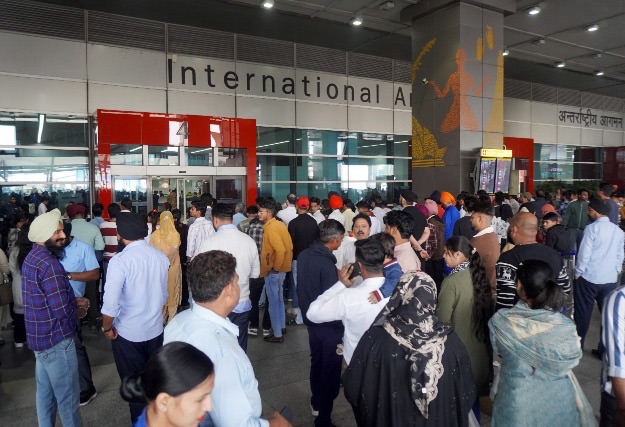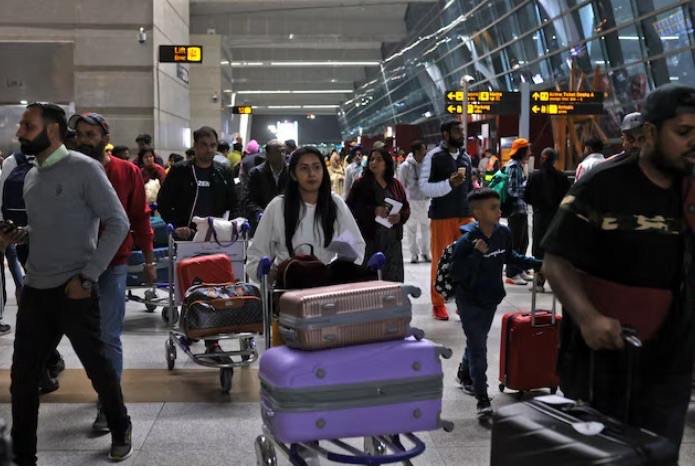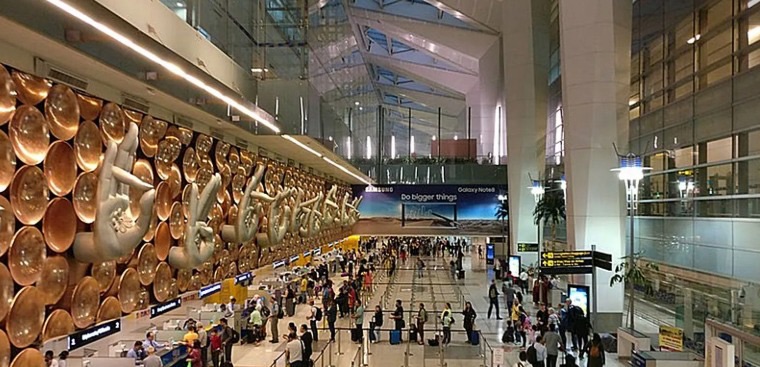A significant technical failure at Delhi’s Indira Gandhi International Airport (IGI), one of the busiest airports in India, caused extensive disruption in flight operations on Friday morning. The Air Traffic Control (ATC) system failure resulted in a near halt to both arrivals and departures, impacting hundreds of domestic and international travelers. Preliminary reports indicated that delays exceeded 30 minutes, with the situation deteriorating throughout the day as planes lined up for clearance. The Automatic Message Switching System (AMSS), an essential element facilitating data exchange within ATC operations, suffered a breakdown, compelling controllers to revert to manual procedures. The Airports Authority of India (AAI) confirmed that its technical teams were working tirelessly to restore the system. The incident not only created chaos within airport terminals but also disrupted air traffic throughout northern India. Travelers were advised to exercise patience and maintain communication with their respective airlines as authorities worked diligently to restore normal operations.
Early Morning Glitch Triggers Significant Delays
The disruption commenced around 5:45 am on November 7, 2025, when the Automatic Message Switching System unexpectedly malfunctioned, interrupting the normal data processing within the Air Traffic Control unit. This system is crucial for relaying essential flight information between airlines and control towers. With the automated system down, controllers were compelled to manually process flight plans, leading to immediate congestion.

By mid-morning, the situation had worsened, resulting in over 100 flights experiencing delays. Passengers reported receiving notifications from airline crews regarding a technical issue affecting both arrivals and departures. The Airports Authority of India released an official statement confirming the glitch and reassured travelers that technical teams were working diligently to restore operations.
Passengers Encounter Long Queues and Congested Terminals
As delays continued, boarding gates and waiting lounges at Delhi Airport became increasingly crowded. With airlines postponing departures, aircraft remained on the ground while incoming flights waited for landing clearances. Terminals, particularly Terminal 3, were filled with long lines of frustrated passengers.
Airlines such as IndiGo, Air India, SpiceJet, and Akasa Air were compelled to issue advisories to their customers. Passengers were consistently encouraged to check with their airlines for real-time updates on revised schedules. Authorities requested patience as teams made efforts to minimize disruption.
Airlines Provide Public Advisories Amid Rising Frustration
By late morning, major carriers began sharing updates across social media channels. Akasa Air indicated that the situation was beyond its control, advising passengers to anticipate longer wait times and potential network-wide delays. SpiceJet also confirmed the impact on its schedules due to ATC congestion, while Air India acknowledged that all departures and arrivals might require rescheduling.

IndiGo, the nation’s largest carrier, reported that other airports in northern India were experiencing similar operational challenges. Airline staff at the airport worked diligently to assist stranded passengers, offering support with meal vouchers, rebookings, and alternative arrangements.
Extent of Disruption and Scale of Impact
By 11:30 am, over 200 flights had experienced disruptions. Aviation experts anticipated that a prolonged ATC outage could soon affect incoming aircraft due to the limited availability of parking bays for grounded planes. Reports indicated that pilots were approaching their duty-hour limits, necessitating airlines to rotate crews and modify schedules.
As the day unfolded, average flight delays surpassed 50 minutes. Data from Flightradar24 revealed that 89% of departures were affected, resulting in the airport’s disruption index rising to 4.3, indicating significant operational strain with numerous cancellations anticipated.
By evening, statistics showed that 97% of flights were delayed, with an estimated 800 aircraft movements disrupted. The cascading effect reached Mumbai Airport, where flights faced secondary delays due to connectivity issues stemming from the malfunction of Delhi’s AMSS.
Possible Cause: Malware Intrusion Under Investigation
As reported by various media outlets, including News18, the technical issue may have been caused by a malware intrusion in the ATC system. Although the Airports Authority of India has yet to confirm this officially, cyber specialists were reportedly summoned to conduct an investigation. Such occurrences raise alarms about the vulnerabilities of critical aviation infrastructure and the necessity for enhanced digital defenses.
Authorities assured that cybersecurity measures were being reassessed to avert similar disruptions in the future. The incident underscored the reliance of India’s aviation ecosystem on automated systems and the far-reaching consequences of even minor technical failures.

Airlines and Authorities Respond to the Crisis
Throughout the day, the AAI and Delhi International Airport Limited (DIAL) issued numerous advisories via official channels. Passengers were informed repeatedly that controllers were manually managing flight plans and that all available teams were mobilized to restore normal operations.
By late afternoon, airlines began signaling potential flight cancellations as delays became increasingly unmanageable. Passengers who had already checked in were advised to remain at boarding gates for timely updates. Many travelers voiced their frustration online, while others commended ground staff for keeping order amidst the chaos.
Financial Impact and Market Reaction
The crisis also sent ripples through financial markets. IndiGo’s shares fell by 1.5% following the news of the disruptions. Analysts noted that while the long-term impact on airline revenues would likely be minimal, it emphasized the pressing need for system redundancy and technological resilience within Indian aviation.

Industry observers highlighted that Indira Gandhi International Airport manages 60–70 aircraft movements per hour, making it one of Asia’s busiest airports. Any substantial slowdown can disrupt the entire domestic flight network, affecting connecting services throughout India.
The Delhi Airport ATC glitch represented one of the most significant operational disruptions the Indian aviation sector has faced in recent history. With over 800 flights delayed, hundreds of passengers stranded, and airlines pushed to their limits, the incident showcased both the weaknesses and strengths of the nation’s aviation infrastructure. While the eventual restoration of the system provided relief, it also sparked a broader dialogue on modernization, security, and the future of air traffic management in India.
For all aviation-related guidance (DGCA ground classes, pilot training, cabin crew training)
Contact us https://contrail.in/
phone numbers +91 78457 69399


